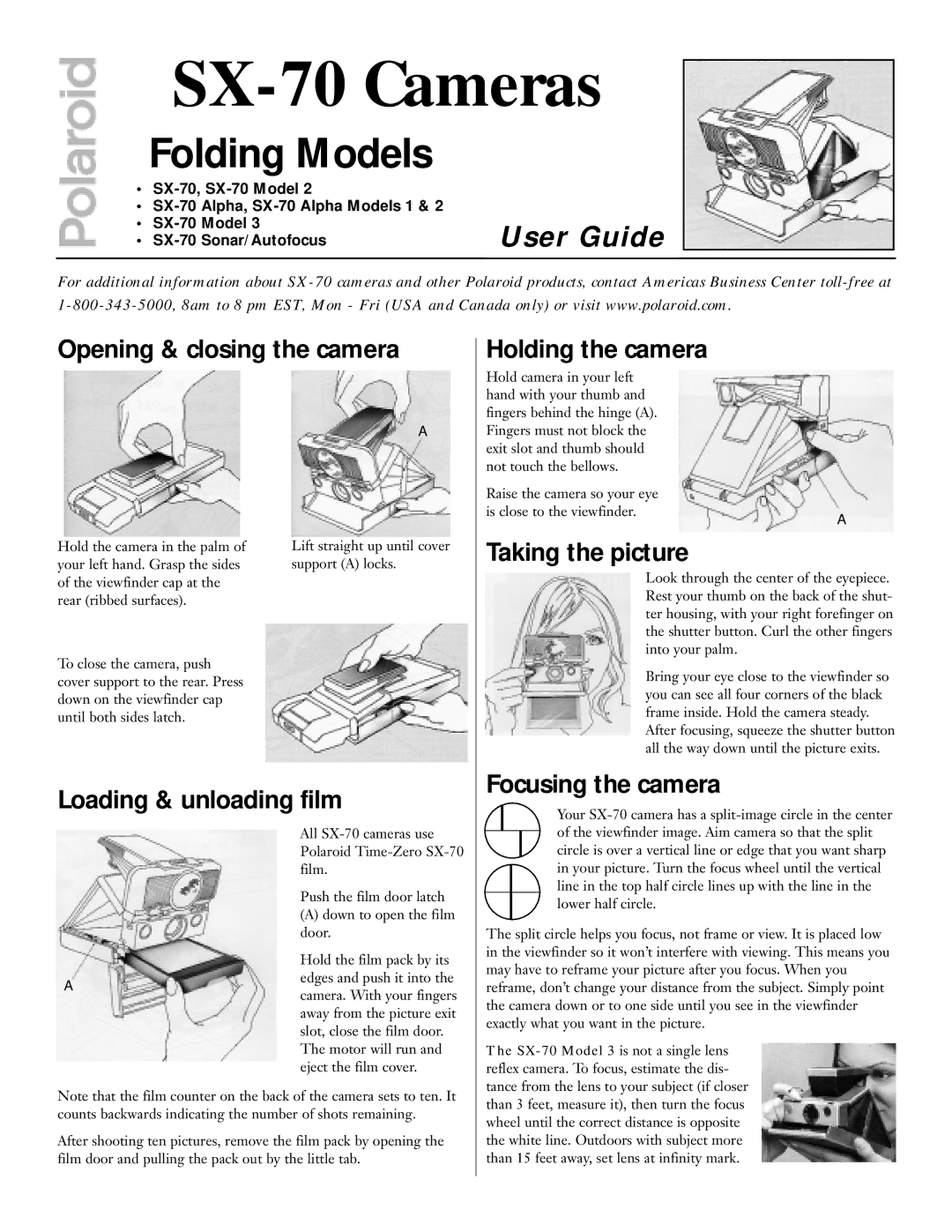SX-70 specifications
The Polaroid SX-70, introduced in 1972, is a groundbreaking instant camera that revolutionized the way we capture and print photographs. Combining innovative technology with a sleek design, the SX-70 became an icon of photography and remains a collectible favorite among enthusiasts and artists.One of the standout features of the SX-70 is its foldable design, which allows for easy portability. When not in use, the camera collapses to a compact size that can easily fit into a bag or purse. This feature was particularly appealing to users who wanted a camera that was both functional and stylish.
The SX-70 was the first instant camera to use a single lens reflex (SLR) system, which enables the user to see exactly what the lens sees through a mirror and prism system. This technology allows for precise framing and focusing, which was a significant advancement over traditional instant cameras. The camera features a fixed 116mm f/8 lens, providing a sharp focus and a shallow depth of field, ideal for portrait photography.
Another revolutionary aspect of the SX-70 is its use of Polaroid's integral film. Unlike earlier models that required separate development processes, the SX-70 uses a special type of film that develops automatically within the camera. This integral film allows images to be printed instantly, with a characteristic glossy finish that quickly fades into the final photograph over the next several minutes.
The camera's exposure system caters to varied lighting conditions, featuring a light meter that assesses the scene and adjusts the aperture and shutter speed accordingly. This feature gives users greater control over their photographs, allowing for capturing images in both bright sunlight and lower light conditions.
Artistic potential is another hallmark of the SX-70. Many photographers have embraced the unique aesthetics of its imaging process. The ability to manipulate the photos during the developing phase, such as folding or pressing the image, opened up new avenues for creativity and altered the characteristics of the final photograph.
In summary, the Polaroid SX-70 stands out for its innovative design, SLR functionality, automatic film development, and artistic potential. Its charm and unique capabilities have solidified its legacy in the world of photography, making it a cherished piece of technology for both collectors and modern users alike.

